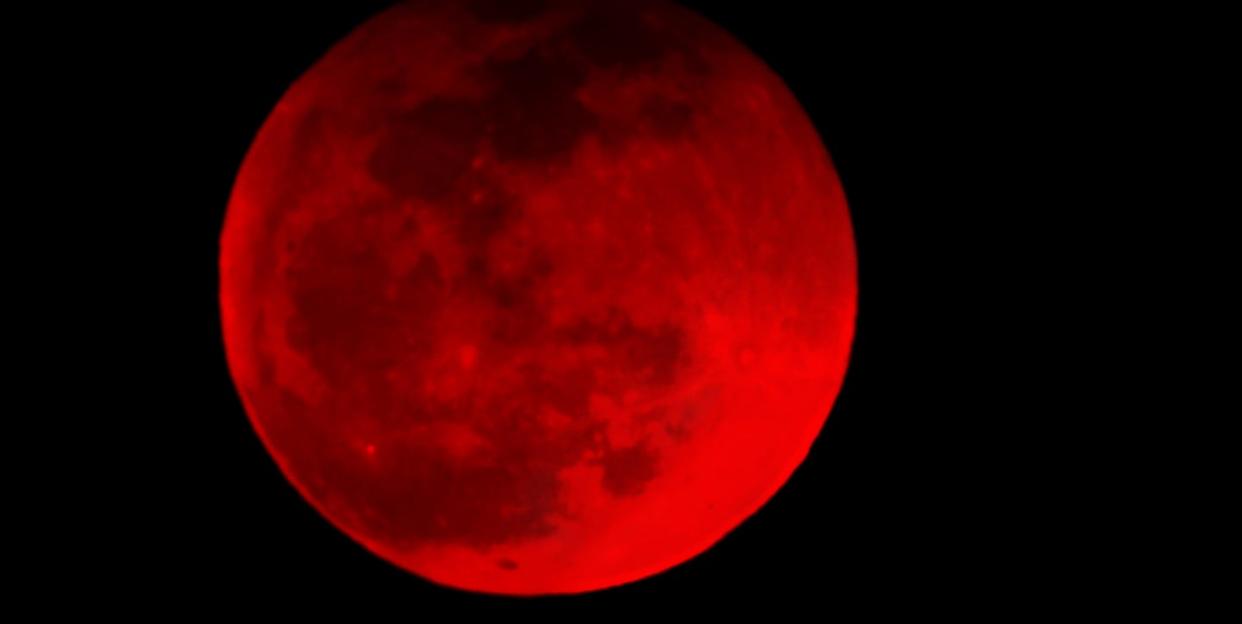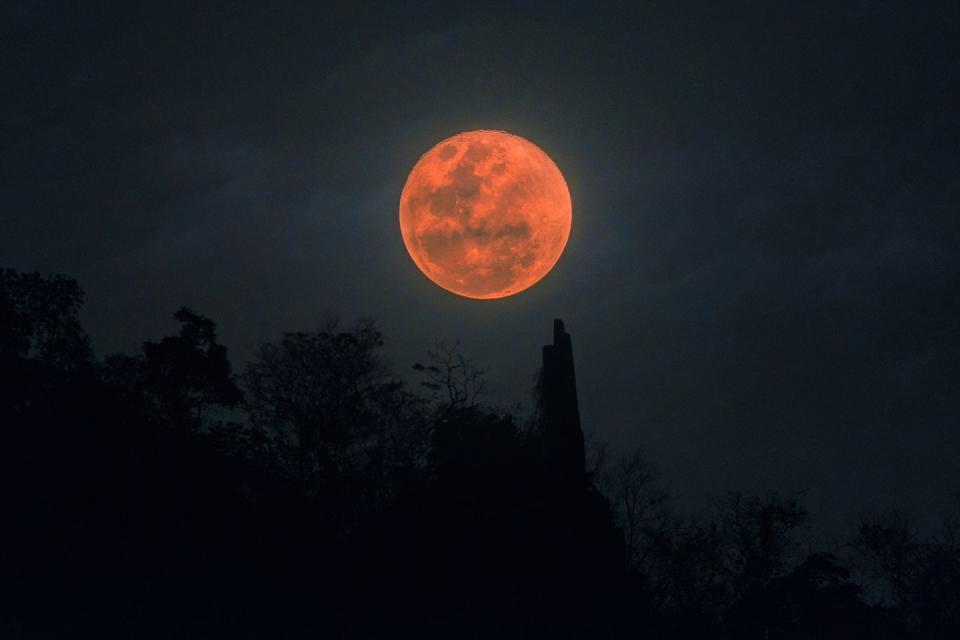A Super Blood Wolf Moon Eclipse turned the sky red this weekend

January's full moon was very special indeed as four lunar spectacles combined to give the night sky a red hue.
Stargazers and astronomers were treated to both a full moon, Wolf Moon, Supermoon and a total lunar eclipse on the night of the 20th/21st of January.

The moon was at its closest point to Earth in its orbit, lighting up the night sky as a striking Supermoon.
The eclipse then give the moon a red glow, creating a phenomenon known as the Blood Moon.
January's full moon has been known as a Wolf Moon for thousands of years. Ancient civilisations tracked the changing seasons by the lunar months rather than the solar calendar, naming the months after features they associated with the northern hemisphere seasons including howling wolves. These names are now used to identify the full moons.

Astronomers said the Super Blood Wolf Moon Eclipse would last around three and a half hours, and a full lunar eclipse will not be seen again until May 2021.
2019 is set to be an exciting astronomical year. Five eclipses, a stunning meteor shower, a rare planet transit and a blue moon will all feature.
('You Might Also Like',)

